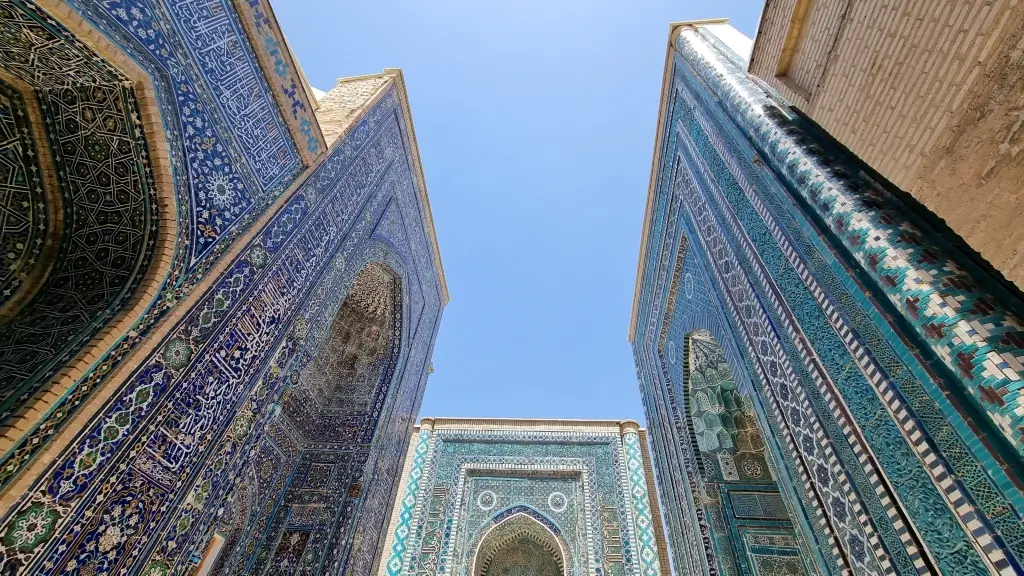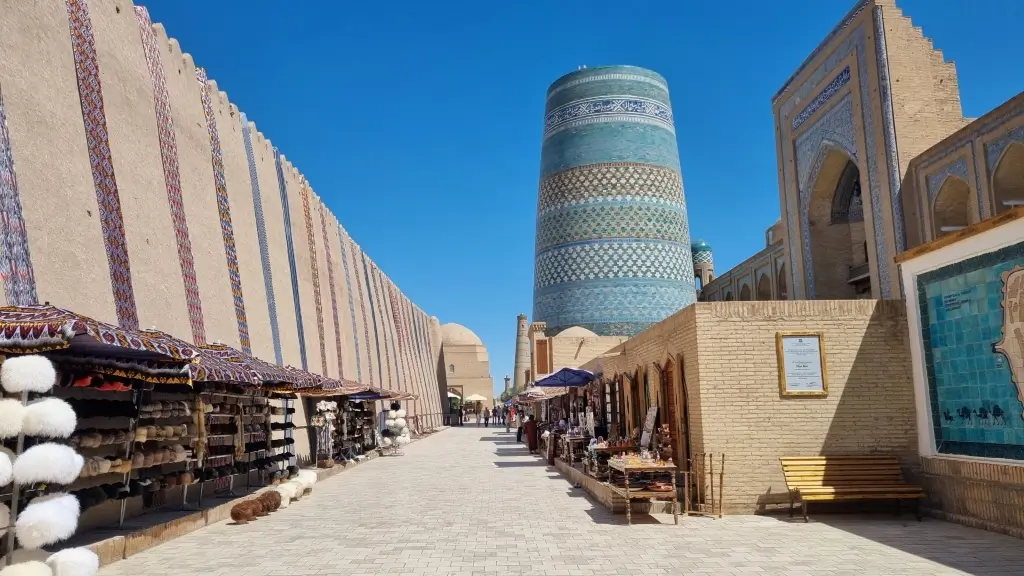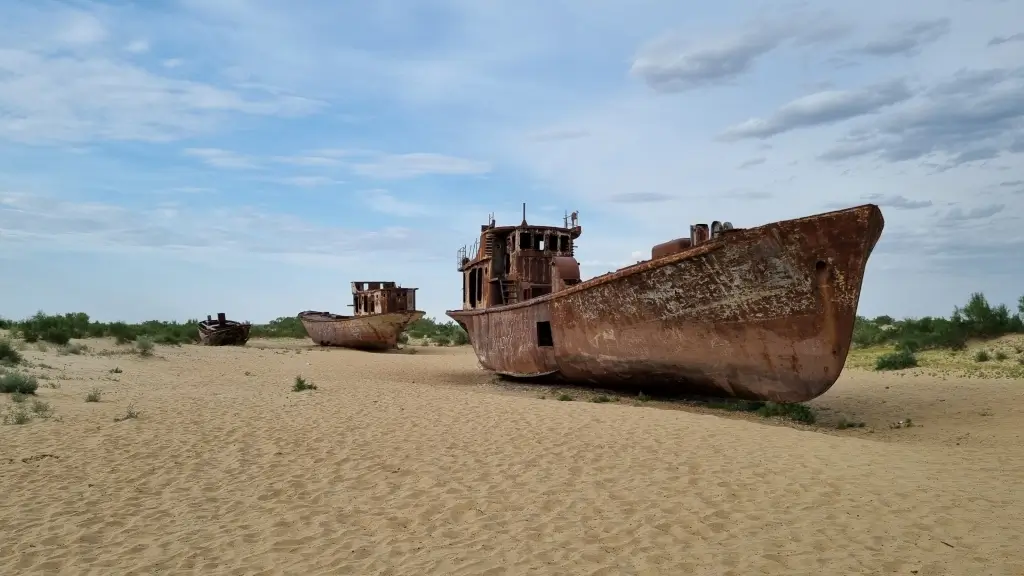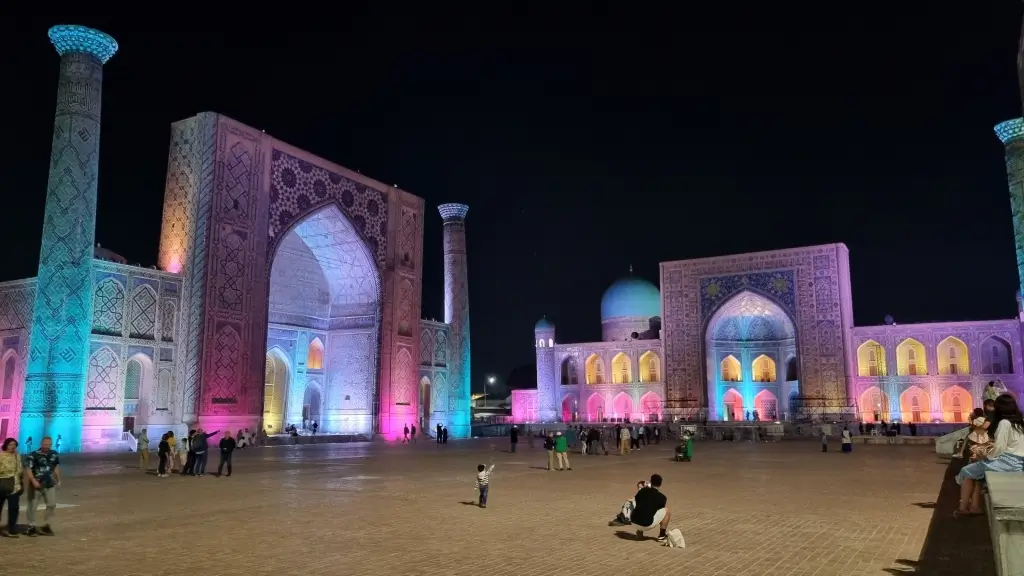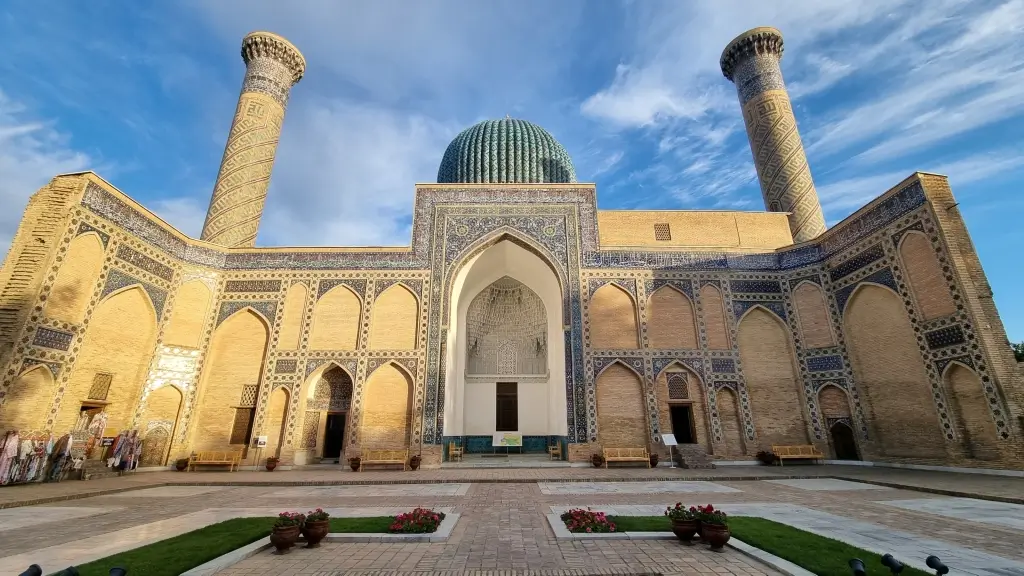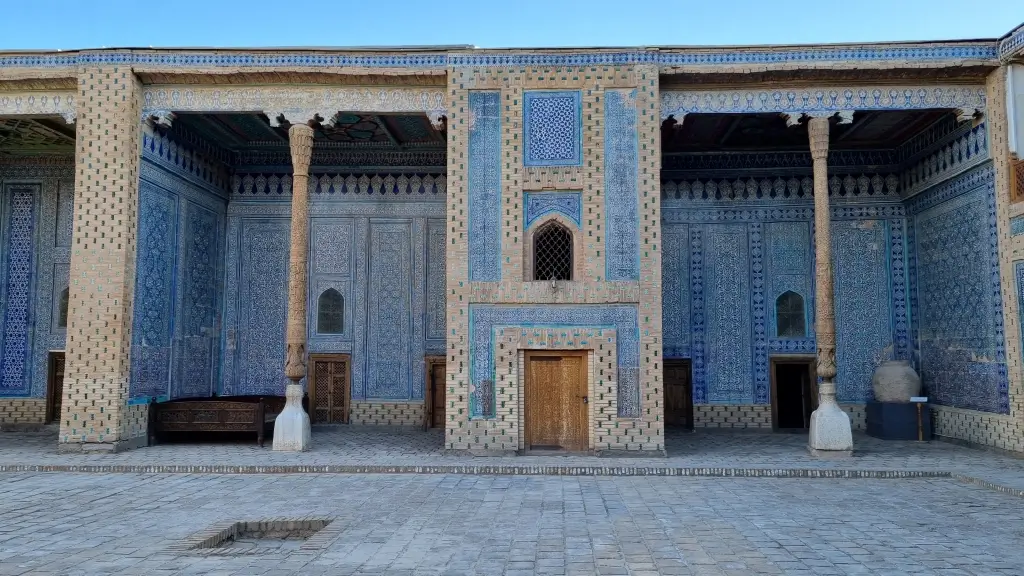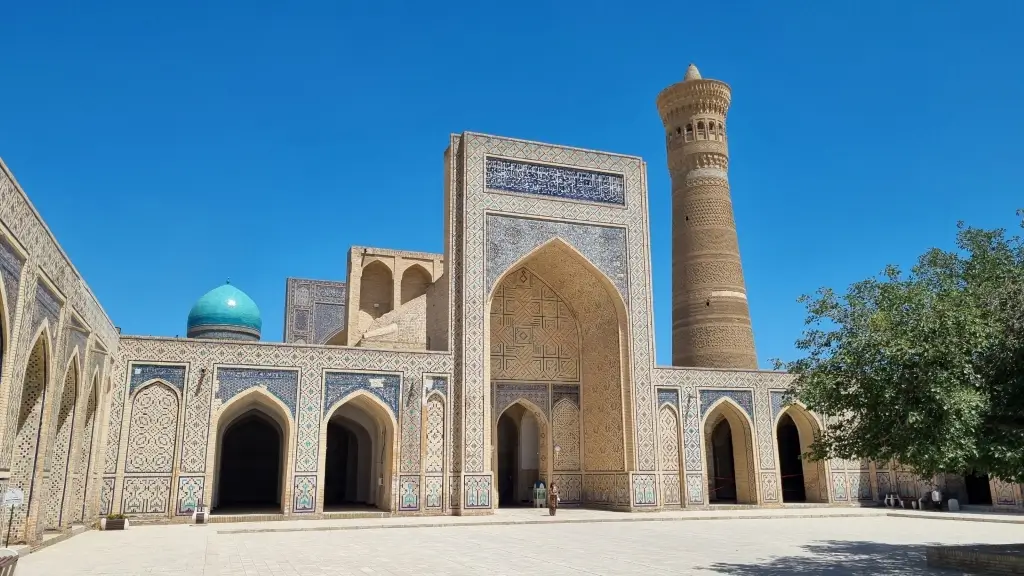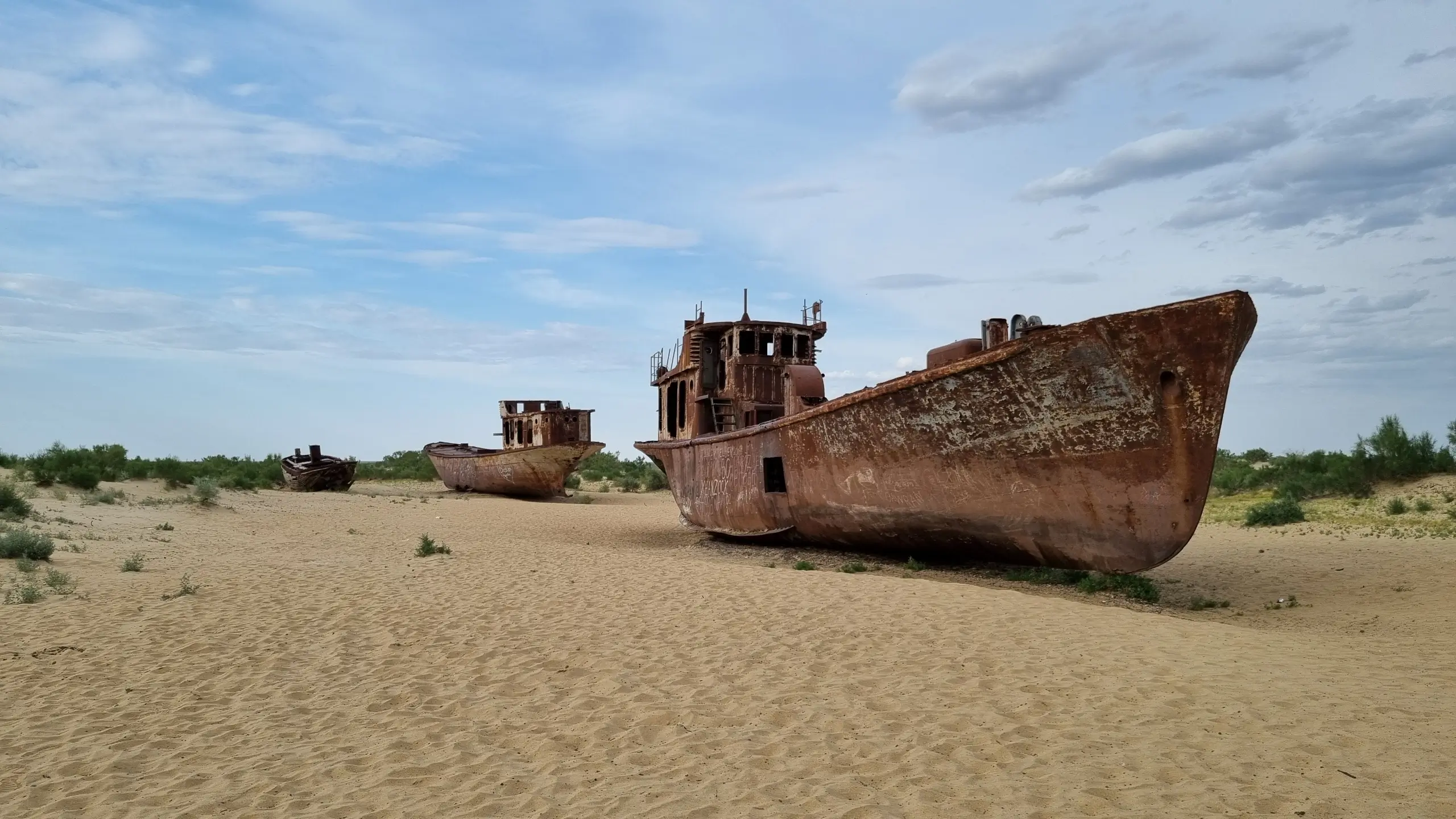
Moynaq: The Tragic Legacy of the Aral Sea and Its Stunning Landscape
Moynaq, a small town in western Uzbekistan, offers a rare adventure for travelers seeking something off the beaten path. Once a bustling port on the Aral Sea, it now lies miles away from the water’s edge. The story of the Aral Sea’s dramatic shrinkage due to human intervention makes Moynaq a uniquely poignant destination. This isn’t just an adventure in the desert; it’s an exploration into the environmental damage caused by neglecting the natural world’s delicate balance.
In the town, the rusting remnants of fishing vessels stand eerily in the middle of a vast, arid desert that was once the shoreline of the Aral Sea. Abandoned ports and a small museum, documenting the rise and fall of the lake, leave a haunting impression. Moynaq’s “ship graveyard” is one of Central Asia’s last true adventures, offering travelers a chance to reflect on the deep loss of nature and the pressing need for environmental protection. For backpackers keen to escape mass tourism, Moynaq is a place for introspection and understanding humanity’s impact on nature.
The Fascinating History of Moynaq
Moynaq’s story is tightly interwoven with the rise and fall of the Aral Sea. Once an important port town, it stretched along the shores of what was one of the world’s largest inland seas. Life thrived here—fishing boats dotted the waters, and the town was a key hub for trade in Central Asia.
However, by the 1960s, disaster struck. The Soviet Union’s aggressive agricultural expansion diverted the Amudarya and Syrdarya rivers, cutting off the flow of water into the Aral Sea. The water levels dropped drastically, and what was once a vibrant shoreline transformed into an expansive desert. Fishing boats that once sailed on the waters now lie rusting in the sand, ghostly relics of a bygone era. The people of Moynaq, too, had to adapt to this profound environmental shift, as many lost their livelihoods and sought new ways to survive.
What Awaits You in Moynaq?
Moynaq is far from a typical tourist destination. Its deserted atmosphere, coupled with the tragic history of the Aral Sea, makes it a fascinating spot for adventurers. Key highlights include:
The Aral Sea Museum
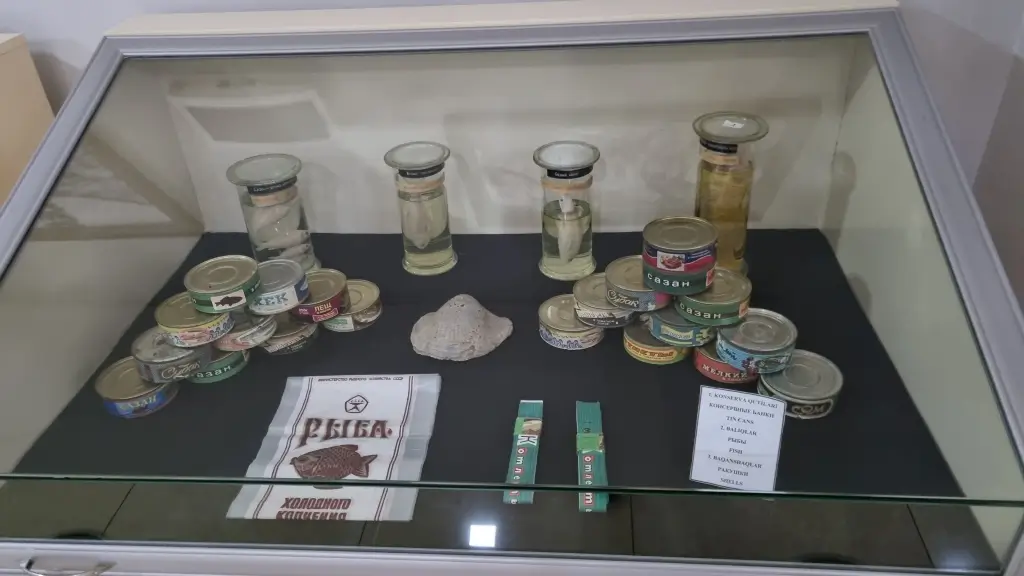
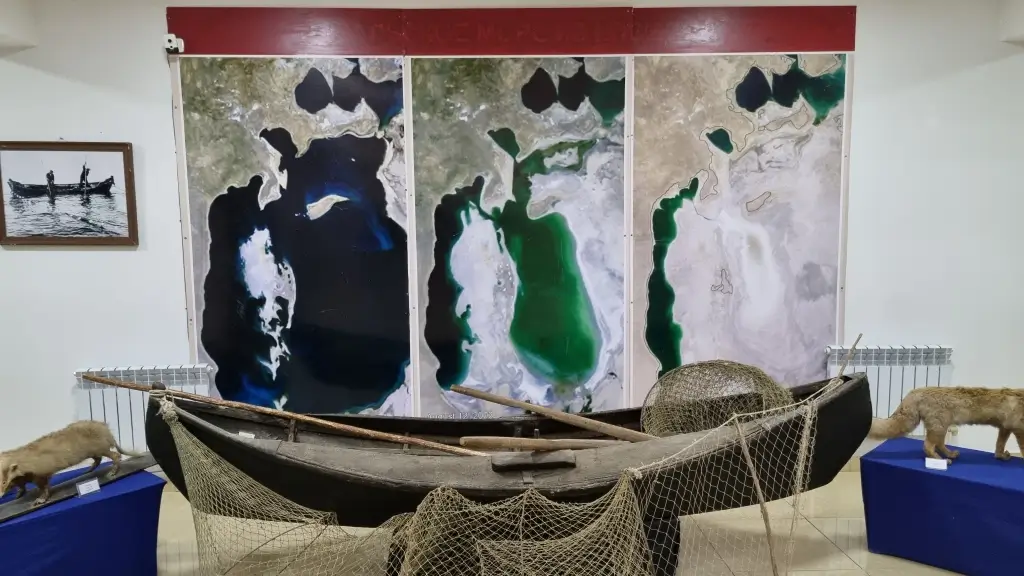
The first stop on your journey should be the Aral Sea Museum. This simple yet informative building chronicles the life of the Aral Sea, showcasing how it once sustained millions and how it shrank due to human actions, especially the redirection of rivers. With old photographs, maps, and historical documents, the museum paints a vivid picture of a world that no longer exists.
Cost: Entry is around 20,000 som (€1.50).
The Ship Graveyard
Perhaps the most haunting site in Moynaq is the ship graveyard. The rusting remains of once-thriving fishing vessels now lie half-buried in the dry desert, creating a surreal landscape. These shipwrecks are poignant reminders of the region’s former prosperity and the drastic changes that followed. Hiking along the coastline, you’ll encounter these eerie remnants, offering a striking visual testament to the transformation of this region.
Cost: Free access.
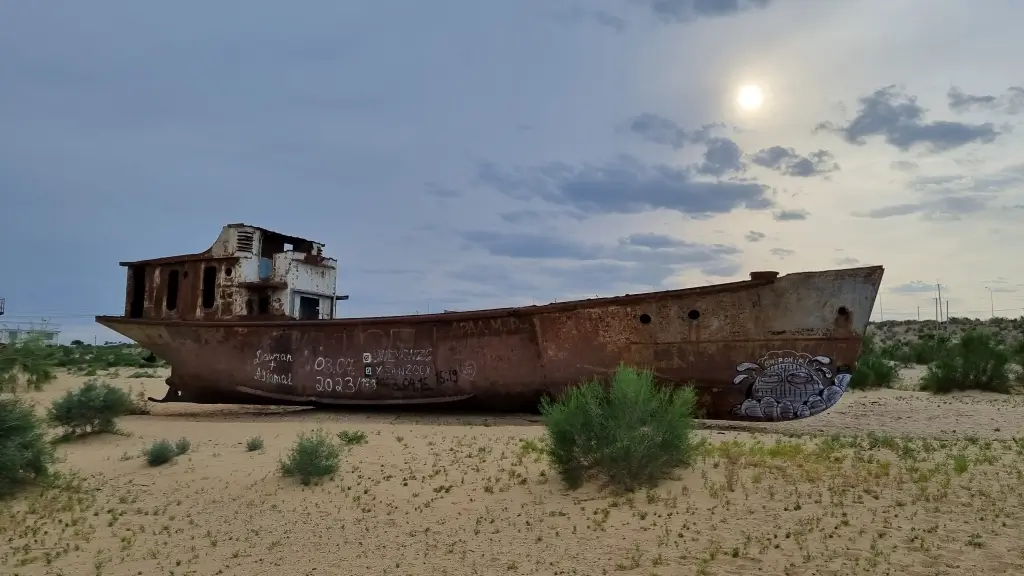
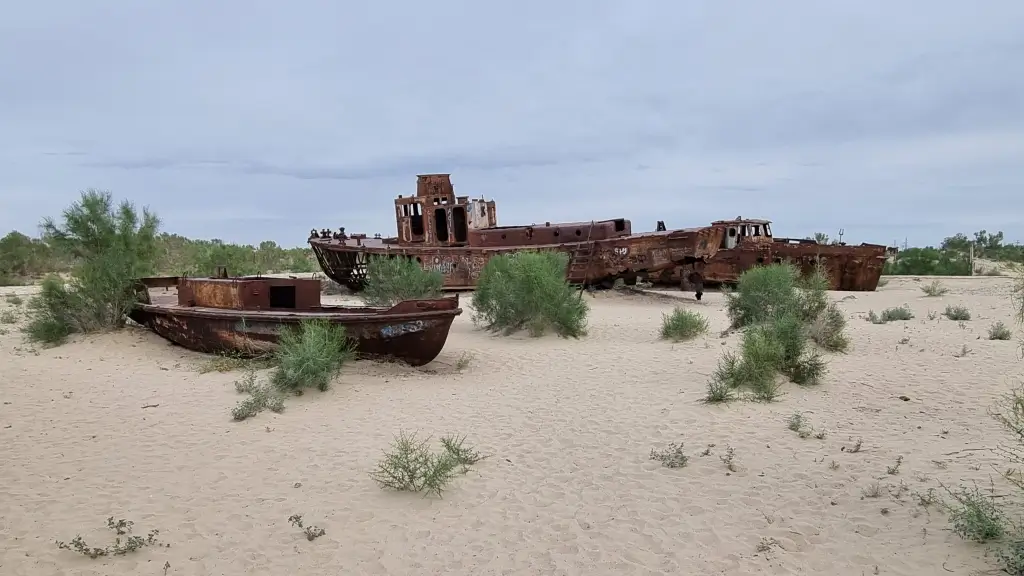
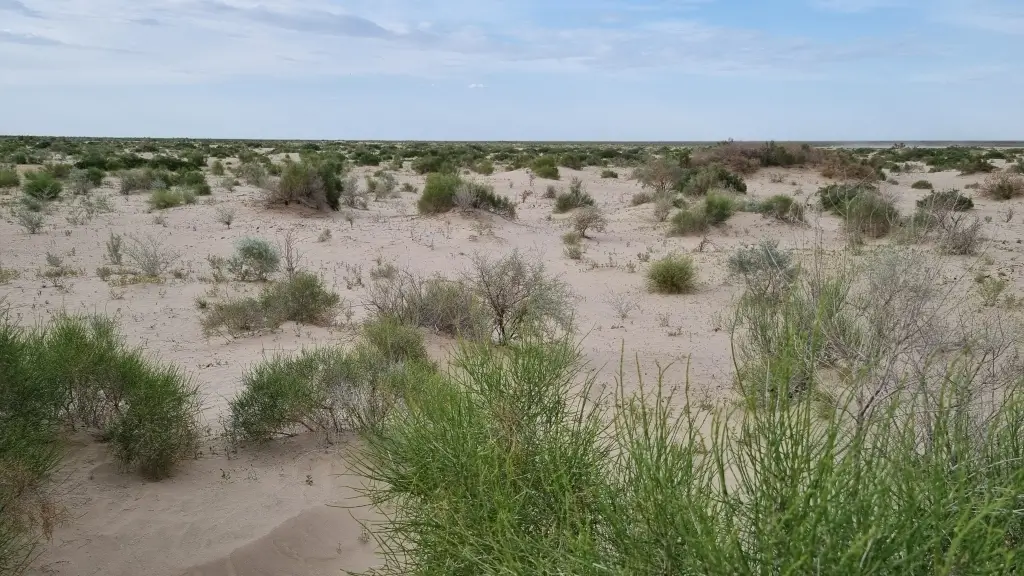
Conclusion
A visit to Moynaq is a unique experience that offers a deep insight into the environmental disaster surrounding the Aral Sea. The abandoned town, now a ghost of its former self, and the vast, desolate landscape will leave a lasting impact. Though the journey to Moynaq may be long and challenging, it’s a rewarding trip for those seeking the unusual. Come prepared, take your time, and be open to the powerful stories this remote destination has to offer.
The locals are proud of their heritage and are happy to share their stories about the region’s changes. A conversation with them will reveal personal accounts of the challenges and triumphs they’ve faced as the Aral Sea has vanished. These exchanges make your visit to Moynaq even more memorable.
Journey from Khiva to Moynaq and Back
The Aral Sea—once the fourth-largest lake in the world—is now a fascinating yet heartbreaking destination. For adventurers keen to explore this desolate region, the journey to Moynaq from Khiva is an essential part of the experience. Here’s a guide to getting there, what to expect along the way, and the costs involved.
Step 1: From Khiva to Urgench
Your journey to the Aral Sea begins in Khiva, where you’ll first head to Urgench.
- Option 1: Taxi – Although Yandex taxis aren’t available in Khiva, you can negotiate directly with a local driver.
- Option 2: Minibus/Trolleybus – New minibuses depart regularly from Khiva’s North Gate. The 30-minute ride costs around 6,000 som (€0.45) per person.
Step 2: From Urgench to Nukus
Once in Urgench, continue to Nukus, the gateway to Moynaq:
- Option 1: Shared Cab – Cabs frequently run between Urgench and Nukus, with tickets priced at around 100,000 som per person. These can be found near Markaziy Dehqon Bozor or Dinamo Stadium. Patience is key, as cars can be full.
- Option 2: Local Bus – The cheaper option is a local minibus, which costs 30,000 som (€2.25) and takes around 3 hours. It departs from Urgench and arrives at the Qubla bus station in Nukus.
Step 3: From Nukus to Moynaq
Now, you’re almost there! The final leg of your journey takes you to Moynaq:
- Option 1: Taxi – A taxi to Moynaq costs about 10 USD per person, and the trip takes 3-3.5 hours. This option is usually available via hotels in Nukus.
- Option 2: Marshrutka (Minibus) – Daily minibuses depart from Nukus Bus Station at 9:00 am, 11:00 am, and 3:00 pm. The cost is 25,000 som (€1.85), and the ride lasts about 3 hours. Be at the station early to secure a seat.
Step 4: Visit the Aral Sea
The Aral Sea’s landscape is one of haunting beauty. The lake’s dramatic shrinkage has left behind a unique and eerie environment. Explore the abandoned ports and rusting ships, and reflect on the history of this once-great body of water.
Return Journey to Nukus
For the return trip to Nukus:
- By Marshrutka – Minibuses depart from Moynaq at 9:00 am or 3:00 pm, costing 25,000 som (€1.85).
- By Taxi – If you prefer a more comfortable ride, taxis are available, though they can be pricier. The journey is faster (around 2.5 hours).
Useful Tips
- Plan Ahead: Prepare for the journey by checking departure times and prices.
- Arrive Early: Minibuses to Moynaq can fill up quickly, so be at the bus station at least 30 minutes before departure.
- Negotiate Taxi Fares: Prices for taxis can vary, so it’s best to agree on a fare before the ride.
- Pack Snacks: Long journeys may not offer many opportunities to buy food, so pack some snacks and water to keep yourself refreshed.
Conclusion
A trip to Moynaq is an unforgettable adventure—a journey that’s both fascinating and thought-provoking. Although the trip from Khiva to Moynaq requires a bit of planning and patience, the breathtaking sights and historical significance of the Aral Sea make it all worthwhile.
Onward Journey – Moynaq to Nukus and Train from Nukus to Tashkent: An Exciting Night Ride
One way to travel through the entire country as quickly as possible is by a combination of bus and overnight train. For example, if you want to travel from Moynaq back to Tashkent, as we did, this takes a little longer but is also a great experience.
For backpackers and individual travelers, the overnight train from Nukus to Tashkent offers a memorable experience. Spanning 900 kilometers, this 16-hour journey allows you to sleep and enjoy the experience of an Uzbek night train.
From Moynaq to Nukus
Minibuses depart from Moynaq at 9:00 am or 3:00 pm, costing 25,000 som (€1.85) and the journey takes 3-3.5 hours. Alternatively, you can also take a cab. This is more comfortable and takes around 2.5 hours.
Once you arrive in Nukus, you can spend the afternoon relaxing in a café or perhaps walking around the city.
The Overnight Train from Nukus to Tashkent
The train departs in the evening and arrives the next morning. It’s a comfortable way to cover the distance and get some rest.
The Different Classes: What to Expect
The overnight train offers three classes:
- First Class (CV): For more privacy and comfort, opt for a private compartment for two people. Ideal for couples or those seeking a quiet, restful night. Price: Around 90 USD (45 € per person).
- Second Class (Coupe): This compartment accommodates four people, divided into two upper and two lower berths. It’s a good choice if you’re traveling with friends or don’t mind sharing space.
- Third Class (Sleeper): The most affordable option, this open compartment has four berths. It’s less private, so it’s perfect for social travelers or those on a tight budget.
Dining Car and Food
There’s a dining car where you can buy snacks and hot meals. While the selection may be limited, it’s a good idea to bring some snacks and water to ensure you’re well-fed during the trip.
Other Useful Tips for the Train Journey
- Booking Tickets: Secure your tickets in advance, either at the station or online via the UZ Railway app.
- Ticket Inspection: Expect a security check, similar to airport procedures.
- Comfort: Third-class compartments may not be as quiet as first and second class, so consider your preference for privacy and noise when booking.
Conclusion
The overnight train journey from Nukus to Tashkent is both practical and exciting. With a variety of classes to choose from, it offers something for every budget and comfort level. The experience provides more than just transportation; it’s a chance to immerse yourself in Uzbek train culture.
More about Uzbekistan
Highlights
If you’re looking for detailed travel information and a great itinerary through Uzbekistan to inspire your next adventure, take a look here.
